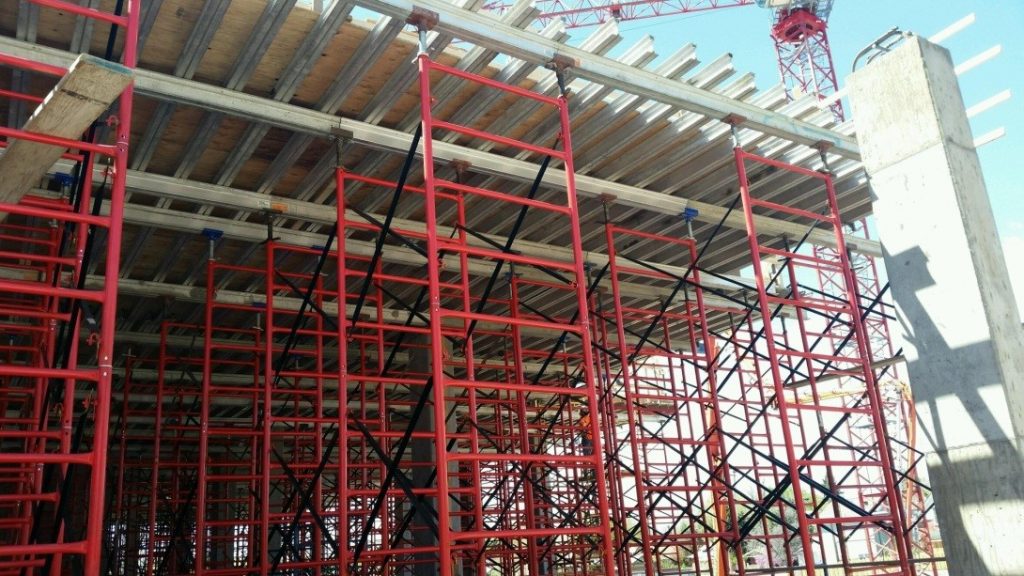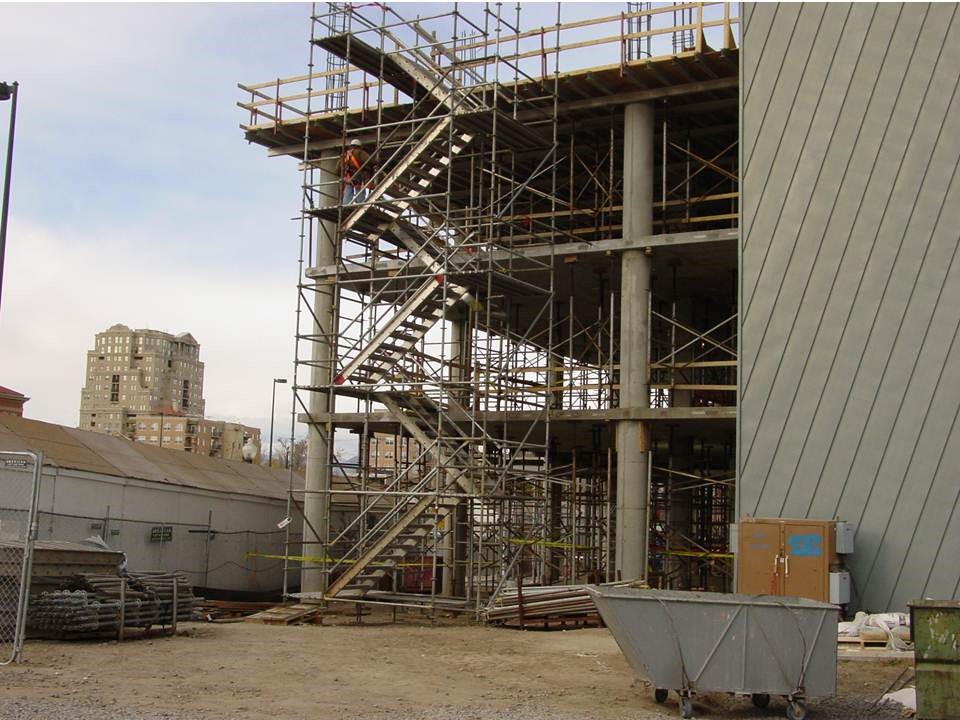If you want to get from here to there, safe access is critical. This is especially true if you want to get to an elevated platform such as a scaffold platform. It is also true for other situations including structures such as shoring and formwork. Since shoring, that is the equipment to temporarily support concrete slabs under construction, can look similar to scaffolding, one would think that the standards applicable to safe access would be similar. How wrong you would be!
The federal OSHA Construction Industry scaffold standards, 29 CFR 1926, Subpart L, specify the various forms of safe access for scaffolding, ranging from the ubiquitous ladder to stairways and direct access. On the other hand, access to shoring and the formwork it supports is actually rather limited, if one is to use the applicable OSHA standards as a guide.
The federal OSHA Construction Industry Standards that apply to shoring and formwork are found at 29 CFR 1926, Subpart Q. An inspection of those standards will show that there are no standards in Subpart Q that address access—the standards are silent on the matter. Does this mean you can do whatever you want to get from the ground to the top of the formwork? While you may be tempted to do so, you may want to pursue the matter a little further. Does this mean that you can use the scaffold standards since the equipment is similar, sort of? Not so fast; just because the stuff looks the same doesn’t mean it is the same.
Here is how it all works. First, horizontal formwork, that is the plywood, joists and stringers that are used as the “Jell-O” mold to support concrete slabs, is considered a “horizontal walking/working surface.” Similarly, the vertical formwork used to form concrete walls is considered a “vertical walking/working surface.”
Second, except for scaffolding, Subpart X of the OSHA Construction Industry standards specifies the requirements for vertical access on construction sites. 29 CFR 1926.1051(a) requires “A stairway or ladder shall be provided at all personnel points of access where there is a break in elevation of 19 inches (48 cm) or more.” (Note: This standard does not apply to scaffolding since there are specific regulations in the scaffold standards that apply to scaffold access.)
Third, if your horizontal formwork is more than 19 inches above the floor below, you must provide a ladder or stairway for employees. If you choose to use a ladder, then you must comply with the standards found in Subpart X. This includes installing the ladder at the appropriate angle (when using a fixed length or extension ladder) and making sure the ladder extends 3 feet above the top landing. If you choose to use a stairway, [Photo 1] then Subpart X also applies. Bear in mind that the Subpart X stairway standards are not the same as the Subpart L scaffold standards. If you use a scaffold stairway to access formwork, the stairway must comply with the Subpart X standards which of course are not the same as the scaffold standards.
Fourth, unlike scaffold frames, shoring frames cannot be used to access the formwork. While you may think that the frame looks like a ladder, [Photo 2] in the eyes of OSHA it is not—it is a walking/working surface and consequently personal fall protection equipment must be utilized when climbing shoring frames. Here is something to mess your mind: If the shoring frames are being used for scaffolding, that is to support a “temporary elevated platform used to support employees or materials or both,” then the frames can be climbed provided they comply with the rung spacing requirements of Subpart L.! Hey, I’m not making this up; it’s true.Fifth, this can get even trickier. Shoring and formwork erectors can climb the frames and walk the joists and stringers provided they utilize personal fall protection equipment. Their work activities are dictated by the provisions of Subpart M, Fall Protection. Similarly, other employees who are not directly involved with the erection of shoring and formwork must comply with the Subpart M standards and the Subpart X standards. In other words, non-erectors must use a ladder or stairway to access the formwork; these employees cannot climb the frames to access the formwork.
 Photo 2: Typical Shoring Frame (Courtesy AP Construction)
Photo 2: Typical Shoring Frame (Courtesy AP Construction)
Sixth, if a typical scaffold clamp-on or attachable ladder is attached to a shoring frame for the purpose of providing access to the formwork, it is unclear which standards may apply. Since the shoring is not scaffolding, the scaffold standards do not apply. Since the ladder is temporary and attached to a temporary structure, it can be argued that it is not a “fixed ladder” and therefore the fixed ladder standards of Subpart X do not apply. (Besides, if you tried to apply the Subpart X standards you would soon be discouraged since it is almost impossible to comply with the Fixed Ladder standards when using a scaffold attachable ladder.) What is a reasonable person to do? Well, to start with, be reasonable. The goal here is to provide a safe workplace for employees. If one were to comply with the scaffold standards even if they are not applicable, I think it would be very difficult for an enforcement officer to prove that there is a hazard. And as the saying goes: No hazard, no violation; no violation, no citation.
In summary, shoring access goes something like this:
- Shoring is not scaffolding and therefore the Subpart L scaffold standards do not apply;
- Access is required when there is an elevation change of 19 inches;
- A ladder or stairway must be used when there is “no ramp, runway, sloped embankment, or personnel hoist provided;”
- The ladder or stair must comply with Subpart X;
- Only shoring and forming erectors can use the shoring equipment for access;
- Shoring and formwork erectors can climb the frames and formwork only if they are utilizing personal fall arrest equipment and it is attached to a suitable anchor that complies with the requirements of 29 CFR 1926.502.(d);









